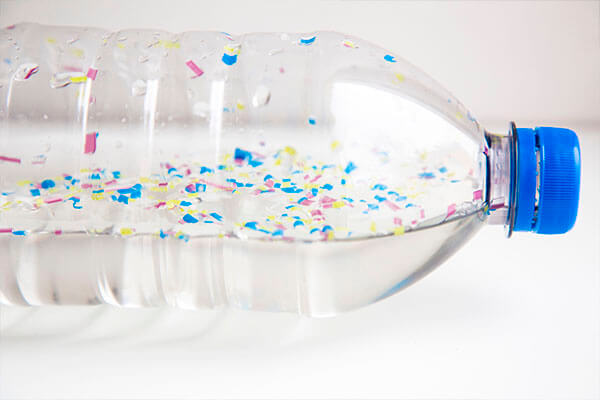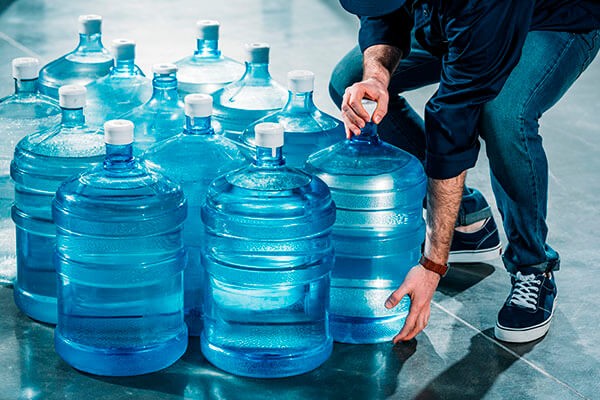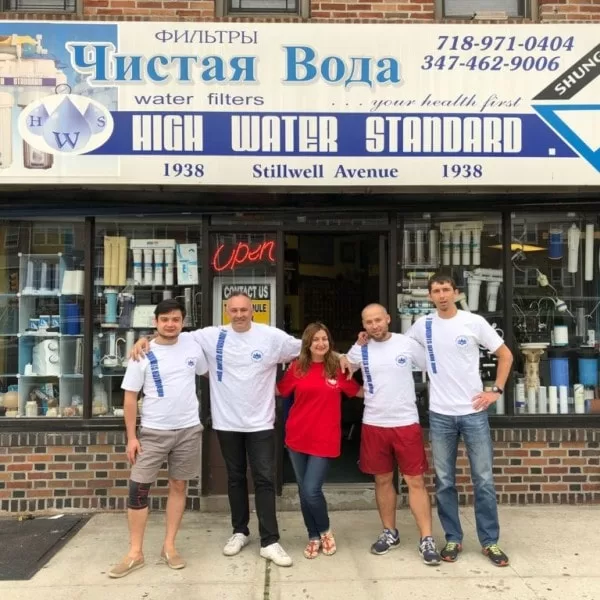
A considerable number of studies have confirmed the harmful effects of plastic bottles and plastic particles found in bottled water (so-called microplastics) on the environment. Every minute, more than a million plastic bottles are used in the world. Despite the growing threat, there are still very few recycling initiatives.
The more garbage there is on the planet, the more harmful the environment we live in, the air we breathe and the water we drink will be. An irresponsible attitude toward microplastics and plastic in bottled water can lead to the cluttering of the ecosystem, clogging of waterways, and also have a negative impact on wildlife.
But the evil influence of plastic is not limited to damage to the planet. Several assumptions and hypotheses claim that contact of different types of plastic with water leads to the ingress of carcinogenic compounds that can adversely affect human health.
Study Finds Microplastics in 93% Of Bottled Water
Recently, scientists have discovered that one cubic meter of Arctic ice may contain several million microplastic particles — 1,000 times more than in previous measurements. When the ice melts, these particles fall into the ocean, where there is already a large amount of plastic debris. News about the large number of microplastics is continually being reported — many researchers believe that it can cause great harm to the environment.
The World Health Organization intends to study the potential risks of plastic particles in bottled water. The most massive study conducted by the journalistic organization Orb Media analyzed the chemical composition of bottled water from the world’s largest brands – a total of 250 bottles from nine countries. In almost every sample (93%), scientists found microplastic in bottled water. Of all the tested samples, only 17 bottles did not contain plastic.

Scientists insist that pollution cannot only be blamed on the water producer. More than 10,000 plastic particles were found in bottled water from Nestlé Pure Life, while the water from Bisleri or Gerolsteiner contained more than 5,000 pieces. Pollution has affected not only the most significant players in the market – it has affected everyone. To avoid unpleasant and sometimes even dangerous consequences of microplastic ingestion, drink only filtered water. Here at High Water Standards, we help you improve your quality of life, by improving the quality of your water.
How Do Microplastics End Up in Drinking Water?But How Do Microplastics Appear in Drinking Water?
They occur due to the wear of automobile tires. For every 100 kilometers of driving, the tires of the car release about 20 grams of plastic dust. According to some reports, about two-thirds of all microplastics washed off the roads. But one-third stays in the air. Thus, the first and most obvious source of microplastics is the air. From the air, we get all this plastic in drinking water.
Approximately 25% of plastic particles enter the sewers during the washing of synthetic fabrics. Hundreds of thousands of microfibers peel off. A recent study found that each washing machine cycle can potentially release 700,000 microplastics into the environment. Finally, small plastic granules are often added to cosmetics (e.g. toothpaste and shower gels) and industrial cleaners to increase their effectiveness.
Another primary source of microplastics is large plastic debris. When packages, disposable dishes, bottles, and other waste are thrown away, they gradually disintegrate into smaller pieces, while maintaining their molecular structure. In recent years, plastic fibers have been found in drinking water, including tap water, in the soil, and even in the air of large cities.
Plastic in bottled water is a huge concern for manufacturers. They claim that their products meet the established quality requirements in the countries they are operating in, however, there are no strict rules for microplastics yet. Some huge players, for example, Coca-Cola, have launched their own investigation on plastics in bottled water.
Health Concerns. So, Is There Plastic in Bottled Water or Not? How Can We Be Sure?
Researchers claim that microplastics are contaminating bottled water too. However, this data has not yet been confirmed by alternative studies.
So, is the plastic in bottled water safe or not? Researchers have reason to believe that plastic fibers in bottled water can be harmful to humans. They often contain toxic impurities, such as dyes and flame retardants, which enter the digestive system and can cause organ damage, inflammation of the intestine, and affect reproduction. Also, microparticles quickly absorb other toxic substances, such as pesticides and dioxins, and then just as efficiently emit them into the body.

Summing up the results, it should be said that there is still very little research on the impact of plastic in bottled water. Most of the data has been obtained from laboratory studies. So, it is not yet possible to say for certain that in nature living organisms receive as many toxins.
However, if you are still worried about the quality of your water and the presence of microplastics, we advise you on home reverse osmosis system installation from High Water Standard.
How to Remove Microplastics from Water?
Despite the fact that we still do not know how plastic is harmful to humans and what the effects of plastic on human health are, prevention can’t hurt. The main way to avoid this type of pollution is to control the known sources of microplastics. We can’t affect the whole environment, but we can affect at least the water in our homes. The best way to do this is a water purification and filtration system. Here are some modern and proven systems:
- Aquaporin, a company originally from Denmark, has launched a project called Bonus Water in partnership with various research centers and universities. The project aims to develop a membrane filter system that will remove contaminants such as microplastics and xenobiotics from water.
- Undersink Carbon Block Filtration Systems remove particles from the water and plastic up to the size of 0.025 millimeters.
- Reverse Osmosis: this system perfectly filters water and removes impurities down to below .0001 millimeters.
Unfortunately, these methods are not applicable to huge factories and will not help to completely remove plastic particles from the bottled water. Nowadays, there are no specialists or technologies for this specific area of the water industry, and consequently, the processing of microplastics has been studied very little.
A high level of financing and technological innovations in this area is necessary for a full and qualitative solution to the problem. Bottled water manufacturers must work together to come up with options for monitoring, controlling, and ultimately reducing microplastic pollution.
Conclusion
It is impossible to imagine life in the modern world without plastic, but it is important to come up with new strategies for its use and production. How to collect microplastics that have already gotten into the environment is not yet clear. Moreover, it is likely to be very expensive.
Some countries have banned the use of plastic granules in cosmetics and household chemicals, but they make up less than 4% of all microplastics. However, reducing the use of disposable plastic and proper disposal of reusable plastics may improve the situation and reduce the amount of plastic in bottled water around the globe.
Working not on the scale of the planet, but on the scale of one house, the best solution to the problem is to install a water filtration system. If you are looking for a reliable and proven water filter supplier, please contact us at High Water Standard. We will select the most suitable type of filter for your home and provide you with clean, safe drinking water for a very long time.






